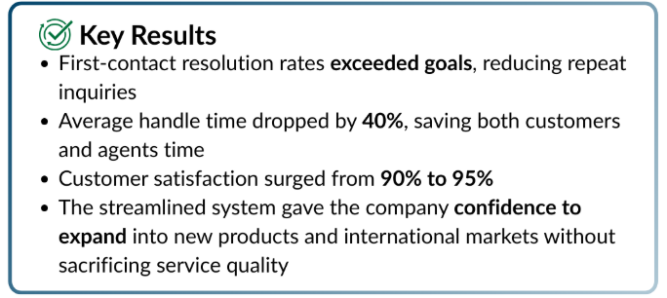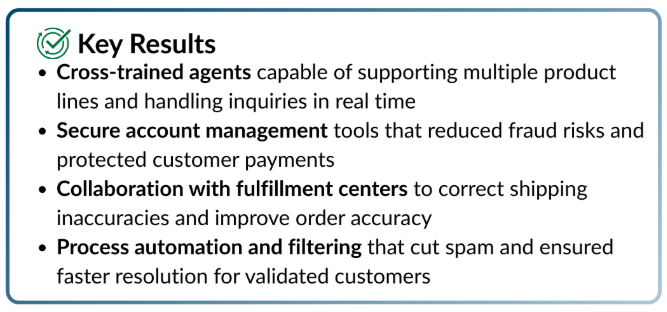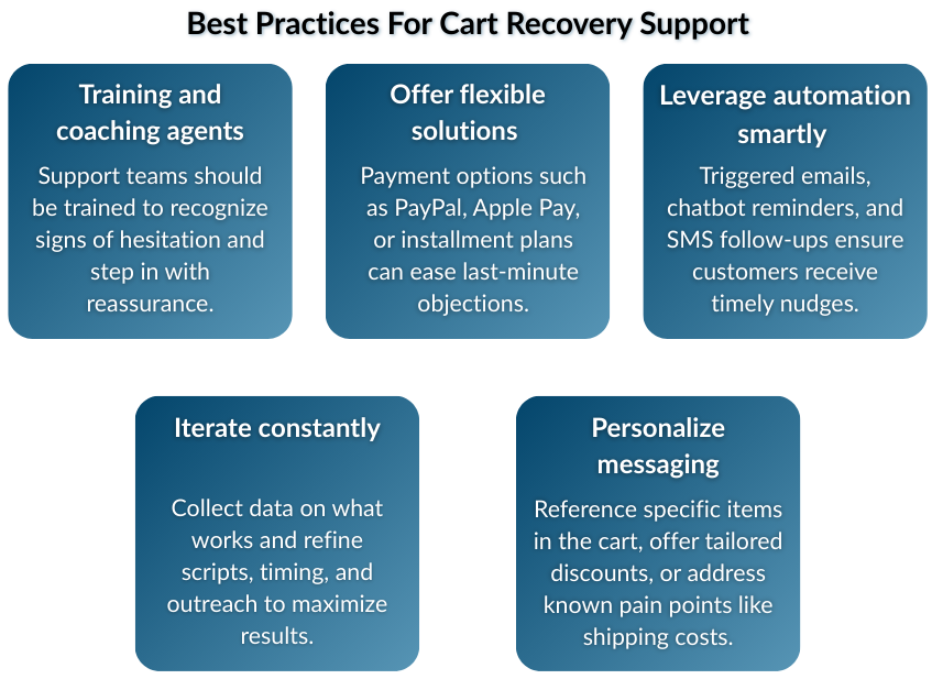How Customer Support Can Reduce Cart Abandonment in eCommerce
Customer support helps reduce cart abandonment in eCommerce by tackling the main reasons shoppers leave such as high fees, checkout friction, or uncertainty about products. With tools like live chat, proactive outreach, and omnichannel support, businesses can resolve issues at the point of decision, recover lost sales, and strengthen long-term customer loyalty.
Read Time: 8 min
Table of Contents
- Turning Cart Abandonment Into Conversions with Smarter Customer Support
- Understanding the Root Causes of Cart Abandonment
- The Role of Proactive Support in Reducing Abandonment
- Leveraging Omnichannel Support to Capture Conversions
- Measuring the ROI of Cart Recovery Support
- Best Practices for Implementing Cart Recovery Support Strategies
- Future Trends in Cart Abandonment Reduction
- Conclusion & Next Steps
Cart abandonment costs eCommerce businesses billions each year but strategic customer support can turn those lost opportunities into conversions. Learn how live chat, personalized recovery outreach, and omnichannel support drive higher CSAT, CRO, and long-term CLV.
Turning Cart Abandonment Into Conversions with Smarter Customer Support
Cart abandonment is one of the biggest challenges eCommerce companies face. With studies showing an average cart abandonment rate of 70%, online retailers are losing millions of dollars annually. These abandoned carts represent not only lost revenue, but also missed opportunities to nurture customer relationships, boost customer satisfaction scores (CSAT), and strengthen customer lifetime value (CLV).
The good news is that customer support for eCommerce is emerging as a powerful force that changes the game. The right strategies in place will:
- Reduce cart abandonment
- Recover lost sales
- Improve customer loyalty
A proactive approach can dramatically improve checkout abandonment rates, and this article will explain exactly how to do it.
Understanding the Root Causes of Cart Abandonment
To effectively implement cart abandonment solutions, it is crucial to understand why shoppers leave items behind in the first place. Statista has found that the top five reasons customers abandon their cart are:
- High shipping costs and unexpected fees
- Slow delivery
- Account creation requirement
- Payment security concerns
- Issues with the checkout process
More subtle reasons can also play a role in cart abandonment. Some shoppers might use their cart as a wish list or even a price comparison tool with no real intent to purchase. Some might even be deterred by lack of personalized guidance to walk them through the journey. These nuances are crucial for designing cart abandonment solutions that address real-world behaviors.
Why Support Matters in Addressing These Issues
Customer support for eCommerce addresses these pain points. Support teams and tools step in at key moments that may cause a customer to abandon their cart and turn potential frustration into resolution.
Live agents are great for providing the human touch consumers look for when they feel unsure or hesitant. A quick conversation with an expert can take care of concerns over product quality, exchanges or returns, and restore confidence in the purchase. Automated systems come into play by providing automatic responses and anticipating needs. This blended approach means an organization can provide support that addresses simple and complex issues without delay.
Support that resolves issues at the point of decision will reduce the number of customers that abandon their carts. Providing this support is also a great way to show that your brand is reliable and customer-first. In the competitive eCommerce landscape, outstanding support is just what organizations need to get ahead of the rest.
The Role of Proactive Support in Reducing Abandonment
Proactive support is a strategy that anticipates challenges before they even occur. It's a great way to identify friction points while also strengthening the customer journey.
Some of the most effective proactive strategies include:
- Live chat prompts on product detail pages to address questions.
- Guided support at checkout to clarify shipping, returns, or discount codes.
- Assistance during payment entry to reduce errors, resolve declined transactions, and build confidence in completing the purchase.
Intelligent chatbots can make this experience even better by resolving common concerns that come up in the customer journey. Sometimes subtle nudges, like emails reminding customers of items left in their carts, re-engage interest without being too pushy. In fact, Barilliance found that a cart abandonment email increased conversion rates by over 20% and an additional follow-up email increased conversion rates by almost 18%. This shows that reminders like this turn lost opportunities into completed sales.
Timing & Personalization
The success of a proactive support strategy relies heavily on timing and personalization. Three factors play the biggest role:
- When to engage: Proactive support can occur before abandonment, like live chat during the checkout process, to help prevent drop-offs. It can also occur after abandonment via cart recovery emails or app notifications to help re-engage shoppers.
- Tailoring messages based on browsing behavior and cart value: A customer that is considering a high-value purchase might need immediate, personalized support. A smaller cart purchase might be effectively recovered with just an automated reminder.
- Using customer data for personalization: Businesses can create personalized outreach by collecting data like location, purchase history, and interaction preferences. Personalized recommendations to customers feel more like assistance rather than a sales nudge.
Proactive support helps customers never feel alone in their buying journey. Cart recovery turns into a customer-centric strategy that helps build lasting loyalty.
Leveraging Omnichannel Support to Capture Conversions
It's no secret that shoppers interact with brands across multiple platforms. Omnichannel customer support eCommerce helps brands provide a consistent experience across touchpoints like email, social media, live chat, or phone. CRM plays a critical role in this process because it provides a unified view of customer interactions. This is great because it means no information is lost throughout the customer journey.
This approach helps to improve the customer experience and improves the likelihood of recovering abandoned carts. In fact, some case studies have shown that retailers who implement omnichannel strategies experience measurable improvements. This shows that support across multiple touchpoints can be a game-changer in eCommerce performance. Below, we dive into a couple case studies from ROI CX Solutions.
Example Case Study #1
As customer demand grew, a wellness company realized their existing support model couldn't keep up. Customers were reaching out across phone, email, chat, and social media and the team couldn't keep up. The siloed approach caused longer wait times and inconsistent answers.
Partnering with ROI CX Solutions and shifting to an omnichannel support strategy helped unify communication into one seamless system. This shift was able to improve efficiency and strengthen customer trust. Omnichannel customer support helps to keep the customer at the center of the journey.

Example Case Study #2
An international online retailer managing multiple product lines was struggling as it expanded into the U.S. market. They faced challenges like shipping errors and familiarity with the products.
To help address these challenges, the company adopted an omnichannel support model that unified phone, email and live web chat. This switch helped provide consistent customer experiences across all touchpoints.

These gains helped the retailer launch a successful expansion into the U.S. market and more.
Abandoned carts represent lost opportunity, but these case studies show how omnichannel support helps recapture it. Engaging customers through the right channel at the right time helps businesses recover potential abandoned purchases.
Measuring the ROI of Cart Recovery Support
Evaluating the effectiveness of cart recovery initiatives requires a holistic view of the customer journey. The combination of financial outcomes with experience driven metrics will show businesses the short-term and long-term value.
Top metrics to include:
- Conversion recovery rate: the percentage of abandoned carts that ultimately convert into purchases after intervention.
- Revenue recovered: a direct measurement of the total sales "saved" through recovery efforts.
- Customer Satisfaction Score (CSAT): Gauges how customers feel about the interactions tied to recovery efforts.
- Net Promoter Score (NPS): Indicates loyalty and likelihood of repeat purchases after a positive recovery experience.
- Customer lifetime Value (CLV): Measures the extended financial impact of keeping a customer engaged beyond the initial recovery.
For executives and managers, seeing the difference between abandoned carts without intervention versus carts successfully recovered through support can make the ROI crystal clear.
Example:
A company has 1,000 abandoned carts in a given month and intervention efforts recover 200 of them, that is not only a 20% revenue gain, but also a chance to retain customers who might have otherwise been lost forever.
Building a Business Case for Executives
For executives, the key challenge is understanding why carts are abandoned and quantifying why it justifies investment. A strong business case will show measurable outcomes tied to revenue and growth.
You start by comparing the cost of implementing customer support interventions to the potential revenue gained from recovered carts. Even recovering a modest percentage of abandoned sales can offset these costs, making the ROI of proactive support immediately clear.
It is also important to highlight customer experience as a competitive differentiator. In eCommerce markets, products and pricing are often similar and how a brand handles issues during checkout can be the deciding factor on if a cart is left or not. Support driven cart recovery helps brands stand out.
Long-term gains in customer lifetime value (CLV) are especially persuasive. Linking cart recovery to ongoing engagement shows the compounding value of investing in proactive customer support for eCommerce.
In short, a business case for cart recovery demonstrates that customer support can drive growth, reduce churn, and strengthen the competitive advantage in eCommerce.
Best Practices for Implementing Cart Recovery Support Strategies
Successful implementation of cart abandonment solutions requires a dynamic approach. Businesses should treat abandoned cart recovery as an opportunity to strengthen customer engagement and build loyalty.
Support teams should be trained to spot signs of uncertainty, like stalled checkouts, and respond with helpful, reassuring guidance. Some of the best cart recovery support strategies find the perfect balance of automation and agents. Let technology handle email and text reminders, and live agents step in for more complex situations. When messaging customers, it works best when it is personalized. Make sure emails and texts reference items left behind, address common concerns, and offer incentives or flexible payment options that make checkout easier.
Cart recovery support is most effective when it is guided by clear objectives and measurable results. Tracking KPIs will help teams fine tune their approach by showing what is working and what needs to be adjusted. Sticking to defined goals ensures cart recovery efforts are aligned with driving revenue and improving the customer experience.

Common Mistakes to Avoid
Even the most well-intentioned cart recovery strategies can stumble if common mistakes aren't avoided. Over-messaging can easily turn reminders into spam, and overly aggressive tactics can leave customers feeling pressured rather than supported. Channel silos are another thing to be aware of; customers have to constantly repeat themselves when agents don't have access to previous communications, and it results in a frustrating situation on both sides. And while recovering an abandoned cart is a win, failing to show up afterword can send you down the path of losing them again.
Future Trends in Cart Abandonment Reduction
The landscape of cart recovery is constantly evolving due to technological advancements and new ways to connect with customers. Cart abandonment strategies today rely heavily on email, SMS, and retargeting ads. The future strategies will be a lot more personalized and predictive and integrated into the customer journey.
AI-powered predictive support is one of the more important innovations growing in popularity. These AI models work fast to analyze browsing behavior, dwell time, and hesitation signals. This information helps eCommerce cart recovery by providing the team with the information needed to intervene. Shifting from reactive support to proactive support is a major step forward in reducing cart abandonment.
Voice commerce and smart assistants are also starting to play a crucial role in the cart recovery process. More households are starting to use smart speakers and voice-enabled shopping, which means more brands are experimenting with integrating cart recovery into these platforms. How it would look is imagine a customer leaving something in their cart, and later they get a voice note from their smart assistant saying, "You left an item in your cart. Would you like to complete the purchase now?" This conversational approach easily integrates into the day and makes cart recovery more natural.
The growing complexity of advanced data analytics will also come into play for cart recovery. Consolidating data provides companies with the information they need to provide hyper-personalized experiences. Every outreach can feature products and discount codes tailored to that specific customer. This method also does an excellent job of driving customer lifetime value by fostering long-term loyalty.
The future of cart abandonment recovery will be meeting customers where they are. To have success, companies will need proactive, personalized, and predictive support to save sales and keep customers.
Conclusion & Next Steps
Customer support is a strategic way to reduce cart abandonment. Companies can take a more proactive approach by re-engaging customers with live chat, personalized reminders, and omnichannel support.
Executives need to reanalyze their current cart abandonment efforts and realign support with customer needs. Scaling or outsourcing eCommerce customer support services provides companies with 24/7 support which means every potential opportunity is captured.
With the right strategy in place customer support turns into a revenue generating engine. Reduce cart abandonment by partnering with ROI CX Solutions. Contact us today to get started.






